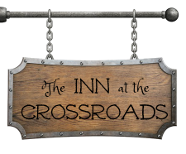
I’ve been thinking a lot about the process that I use to make fictional foodstuffs into real recipes for use in real kitchens. I often joke in interviews that I employ a “fictional locavore” approach when deciding how to make a dish, but that’s not far from the truth. I try to take into consideration factors such as culture, geography, climate, expense, aesthetic, etc. Most of this is sort of intuitive for me, depending on how much source material I have to work with, but when I get a little stuck, it’s helpful to consider these factors to understand the food’s role in a particular setting. It’s a method I use not only for the making of the food, but how I stage and photograph it- more on that later…
Here’s what I currently have for a breakdown so far:
Necessity
Cost
Environment
Logistics
Transportation
Setting? Equipment?
Culture
Aesthetics
History/Tradition
Necessity – this is perhaps the largest factor that goes into food consideration, yet it isn’t only that food is necessary for survival. Food can also be a luxury item, dependent on cost. For Westerosi peasants or the chronically poor in the underbelly of a futuristic sci fi city, food is generally a matter of survival, not pleasure. Everyone must eat to survive, but the wealthy in any fictional setting can enjoy a much higher standard of cuisine than those who scrabble together a living day by day.
Environment often plays a large role in the necessity of a food as well, as certain tasks and environments necessitate certain foods. Imperial Storm troopers and rebel soldiers alike- indeed all soldiers, in any setting- need access to high protein foods that are easily carried.. The variety of foodstuffs available in a desert region like Dorne will be very different from the abundant crops and plants grown somewhere like The Reach. In a place with little moisture, or unpredictable access to oases, even something as offbeat as fermented mare’s milk becomes desirable.
Curiously, the limitations of geography can be overcome by those who are able to pay the cost, making for an interesting balance between the two factors.
Logistics – The making of different foods can often be complicated by the ability to obtain and make it, as well as to transport it, if need be. An evil galactic empire, for example, would excel at moving things from one place to another, so they have ample food for their troops. The further an ingredient has to travel, the more costly it becomes. The Dunmer ranging far from Morrowind might crave kwama eggs, but if they can’t afford the cost of purchasing one, might have to make do with locally available chicken eggs, rather than those from their home.
The logistics of food production and consumption are mitigated yet again by the setting in which the food is found. A lavish welcome feast for a visiting ambassador will have considerably different foods than one might find on the Millenium Falcon, for example. The feast can be prepared in full sized kitchens by a multitude of staff with access to a variety of ingredients, while food upon the famous Corellian freighter must be stored for long voyages, prepared in the small ship’s galley, and likely doesn’t include much variety.
Culture – Finally, each recipe is shaped by the culture of those who make, sell, trade, purchase, or eat it. This is most easily recognized in the aesthetics of the dish- how it is presented and eaten. This ties in with the setting and equipment limitations, as above, but a culture that values beautiful food would find a way to make a dish appealing no matter the circumstances. Think of the marvelous sculpted cakes and pastries from the Gentlemen Bastards series, or the elaborate pigeon pie from Joffrey’s wedding feast.
History/Tradition also plays a cultural role in the preparing and enjoying of foods. The Bosmer of Elder Scroll’s Tamriel have a religious belief that prevents them from harming any plant in their home forest, which means that they are consummate carnivores. Conversely, Haviland Tuf, despite having access to infinite cloning capabilities, varies only the types of mushrooms he includes in his vegetarian meals. This form of culture can also be reflected in a dish with an unconventional ingredient, if that ingredient is a rare and valued part of that society’s culture (Scandinavian cloudberries come to mind).
There you have it, in a rather sizable nutshell. :) Whaddaya think?

I think it’s a fascinating process, it’s really interesting how you have to think about all these different factors when planning a recipe!
Very interesting and helpful!
On Logistics, not to mention, depending on what planet the Millenium Falcon is berthed at, the limitations of available edible foods that Solo and Chewy can access to rebuild there stores when needs be…
Exactly! It’s a surprisingly complex detail to consider within fiction…
Another interesting factor to consider is that things are valued largely based perceived rarity and the difficulty one might have of getting that ingredient. For example, back when sugar had to be imported from India, only the wealthy could afford it, and so they used it whenever they could, even in meat dishes! Once sugar plantations were built in the American colonies, though, the price of sugar went down considerably, causing the rich to lose interest.
It’s interesting to note that nowadays in America, “locally produced” is seen as more desirable in foodstuffs.